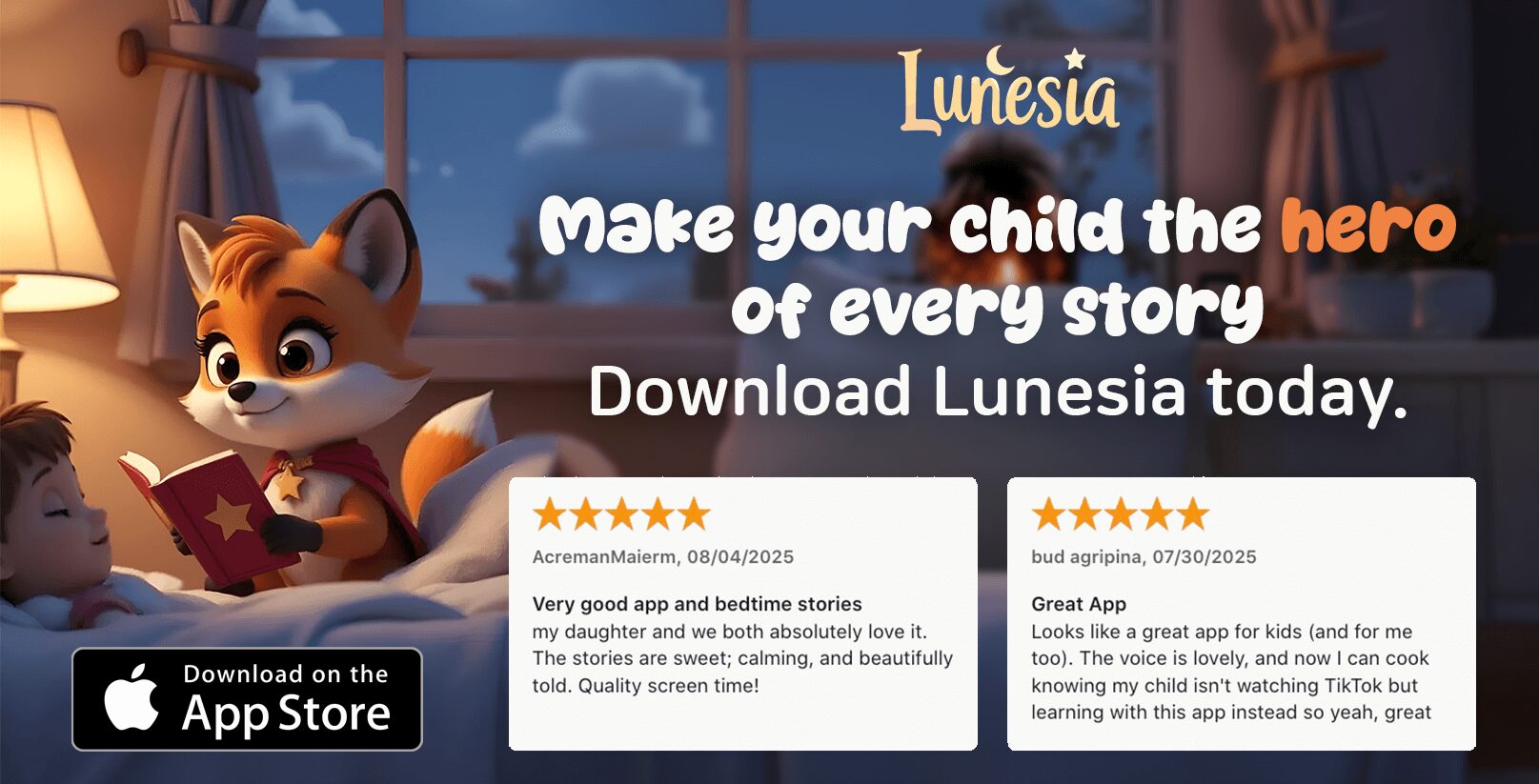Have you ever wondered how children develop their creativity and emotional intelligence from a young age? As a parent or educator, you play a significant role in shaping their young minds. Storytelling is a powerful tool that can help you unlock their imagination and support their overall development.
Through storytelling and creativity, children can process their experiences, develop problem-solving skills, and build emotional resilience. By fostering a nurturing environment that encourages play and imagination, you can help your child thrive.
As we explore the world of narrative play, you’ll discover practical ways to support your child’s learning and development, transforming everyday moments into opportunities for growth and creativity.
The Power of Stories in Child Development
The power of stories in child development cannot be overstated, as they form the foundation for various essential skills. Stories have been a cornerstone of human experience, providing a means to pass down knowledge, values, and cultural understanding from one generation to the next.
When children engage with stories, their brains create neural connections that support language development, memory formation, and emotional processing. These are critical foundations for future learning. The symbolic thinking required in storytelling directly supports literacy development as children learn that written words symbolize real objects and experiences.
What Makes Storytelling Fundamental to Human Experience
Storytelling is intrinsic to the human experience, serving as a vehicle for sharing experiences, teaching moral lessons, and conveying cultural heritage. Through stories, children gain a deeper understanding of the world around them, developing empathy and perspective-taking skills.
By engaging with stories, children are able to make sense of complex emotions and social situations, helping them navigate their world in a manageable way. This engagement is crucial for building a strong foundation for future social-emotional skills.
The Connection Between Play and Learning
Play is a vital component of early childhood, fostering an environment where children can learn and grow. Through play, children develop thinking and oral language skills, practicing the art of putting their thoughts into words. This intrinsic connection between play and learning is essential for cognitive development.
As children engage in play, they begin to understand that one thing can represent another, laying the groundwork for literacy and symbolic thinking. This connection between play and learning highlights the importance of incorporating narrative play into early childhood education.
Understanding Narrative Play in Early Childhood
Understanding narrative play is crucial for parents and caregivers who want to support children’s cognitive and emotional development. Narrative play is a rich and dynamic aspect of early childhood, where children engage in creating, telling, and acting out stories. This form of play is not just about entertainment; it’s a foundational element in the development of a child’s imagination, language skills, and social understanding.
Defining Narrative Play
Narrative play is a specific form of imaginative play where children create, tell, or act out stories, either independently or collaboratively with others. It’s characterized by the creation and development of storylines, characters, and events. Children engage in narrative play in various ways, including verbal storytelling, dramatic play with props, puppet shows, or drawing story sequences. For instance, a child might use a puppet to retell a favorite story or create an entirely new narrative. Narrative play can also occur in conversations that might not look like “play” to adult observers, making it a versatile and multifaceted form of play.
At its core, narrative play involves retelling familiar events, reimagining stories they’ve heard, or creating entirely new narratives from their imagination. This form of play is essential for building the foundations for literacy, communication, and social understanding. By engaging in narrative play, children develop their cognitive and linguistic abilities, laying the groundwork for future academic and social success.

How Narrative Play Differs from Other Types of Play
Narrative play differs significantly from other forms of play, such as constructive play or physical play. While constructive play focuses on building and creating with objects, and physical play emphasizes gross motor skills, narrative play centers around the development of storylines and characters. This distinction makes narrative play particularly beneficial for exercising a child’s cognitive and linguistic abilities.
Unlike other play types, narrative play allows children to explore different scenarios, experiment with language, and develop their problem-solving skills. For example, when children engage in role-playing, they might create characters and storylines that help them understand different perspectives and social cues. This form of play is not just about having fun; it’s a critical component of a child’s developmental journey, fostering creativity, empathy, and understanding.
By recognizing the unique value of narrative play, parents and caregivers can better support children’s development. Encouraging narrative play can be as simple as providing a conducive environment, engaging in storytelling, or simply allowing children the freedom to explore their imagination. As we nurture this aspect of childhood, we help children build a strong foundation for future learning and social interaction.
The Developmental Benefits of Narrative Play
The benefits of narrative play in early childhood are multifaceted and profound. As children engage in storytelling, they develop a wide range of skills that are crucial for their overall development.
Cognitive Development Benefits
Narrative play significantly enhances cognitive development in children. By planning storylines, remembering character details, and organizing sequential events, children strengthen their executive function skills. Regular engagement in storytelling also develops stronger working memory, which is vital for following multi-step directions and solving complex problems in academic settings.
Language and Literacy Skills
Through narrative play, children experiment with vocabulary, sentence structure, and dialogue, often incorporating new words they’ve heard in books or conversations. This play builds the foundations of literacy as children develop an understanding of story structure, character development, and cause-effect relationships, laying the groundwork for future academic success.
Social-Emotional Growth
Narrative play fosters social-emotional growth as children use stories to process feelings, work through challenging experiences, and practice perspective-taking. Collaborative storytelling with peers develops crucial social skills, including turn-taking, listening, and compromising. Research shows that children who engage in regular narrative play demonstrate greater empathy and emotional intelligence.
In conclusion, narrative play is a vital component of early childhood development, offering benefits across cognitive, language, and social-emotional domains. By encouraging narrative play, parents and caregivers can support children in developing a strong foundation for future success.
The Evolution of Narrative Play Through Developmental Stages
From babbling babies to school-age storytellers, the journey of narrative play is a fascinating process that mirrors a child’s overall growth. As children progress through different developmental stages, their engagement in narrative play becomes increasingly sophisticated.
Babies (0-12 months): Setting the Foundation
During infancy, babies don’t directly engage in narrative play, but they are exposed to the rhythms and patterns of language through the stories adults share with them. When parents respond to a baby’s babbles with conversational tones and questions, they lay the groundwork for future storytelling abilities. For example, reading to babies can be a beneficial bonding experience, helping them develop an understanding of speech patterns and tone of voice.

Toddlers (1-3 years): Emerging Storytellers
Toddlers begin to experiment with simple narrative sequences, often retelling familiar events or favorite parts of stories they’ve heard. Although they may struggle with chronological order, their attempts at storytelling show a developing understanding of narrative structure. By ages 2-3, many children start using phrases like “When I was little…” or “When I grow up…”, demonstrating their growing grasp of time and narrative sequence.
Preschoolers (3-5 years): Elaborate Narratives
Preschoolers develop more elaborate narratives with recognizable beginnings, middles, and endings. Their stories often blend real experiences with fantastical elements, reflecting their growing social awareness. Characters in their stories begin to have distinct personalities, motivations, and relationships, showcasing their maturing social skills.
School-Age Children: Complex Storytelling
As children enter school age, they create complex narratives with multiple characters, subplots, and sophisticated problem-resolution sequences. This complexity demonstrates their advancing cognitive abilities and their capacity for more intricate storytelling. Throughout these developmental stages, narrative play serves as both a reflection of a child’s development and a tool for supporting their growth.
Key Elements of Effective Narrative Play
As children engage in narrative play, they develop crucial skills that shape their understanding of the world and their place within it. Narrative play is a complex activity that encompasses various elements, each contributing to a child’s overall development.
Sequencing and Cause-Effect Understanding
Narrative play incorporates sequencing skills as children learn to organize events in a logical order. Understanding that stories have beginnings, middles, and endings helps children make sense of their experiences. This sequencing also introduces cause-effect relationships, teaching children that actions have consequences and aiding in the development of logical thinking patterns.
Character Development and Perspective Taking
As children create stories, they develop characters that become increasingly sophisticated over time. This character development allows children to practice perspective-taking, seeing situations from multiple viewpoints. It’s a fundamental skill for developing empathy and social understanding. By creating different characters, children can explore various motivations, feelings, and relationships, mirroring their understanding of real people.
Problem-Solving Through Stories
Narrative play provides a safe space for children to work through challenges and test different solutions. By engaging in storytelling, children can experience the consequences of various choices without real-world risks. This process fosters problem-solving skills and builds resilience. For more insights on how narrative play supports learning, you can explore resources like learning stories that highlight the educational benefits of narrative play.
By understanding these key elements, parents and educators can better support children’s narrative play, fostering an environment that encourages learning and development through storytelling.
Practical Ways to Encourage Narrative Play in Early Childhood
By incorporating narrative play into your daily routine, you can help your child develop essential skills that will benefit them throughout their lives. Narrative play is a powerful tool for child development, and there are many practical ways to encourage it.
Reading and Book-Based Activities
Reading together provides the perfect foundation for narrative play. Choose books with engaging plots and relatable characters, then extend the experience by asking open-ended questions about what might happen next or how characters feel. You can also create story baskets or “story sacks” containing a book along with related props, puppets, or objects that children can use to retell or extend the story in their own way.
Storytelling Games and Prompts
Introduce storytelling games like “story stones” (rocks with simple images painted on them) that children can arrange in different sequences to create unique stories. You can also use storytelling card decks designed specifically for young children. These games encourage creativity and help children develop their narrative skills.
Dramatic Play Opportunities
Set up dramatic play areas at home with simple props related to familiar scenarios (doctor’s office, grocery store, restaurant) and watch as children naturally create narratives around these familiar settings. This type of play helps children develop their social-emotional skills and learn to navigate different roles and scenarios.
Everyday Conversations as Narrative Play
Turn everyday conversations into narrative opportunities by asking children to recount their day in sequence, helping them organize their thoughts into beginning-middle-end structures. You can also use family photos or memory boxes to prompt storytelling about past events, helping children connect their personal experiences to narrative structures.
| Activity | Benefits | Tips |
|---|---|---|
| Reading together | Develops language and literacy skills | Choose books with engaging plots and relatable characters |
| Storytelling games | Encourages creativity and narrative skills | Use story stones or storytelling card decks |
| Dramatic play | Develops social-emotional skills | Set up play areas with simple props |
By incorporating these practical strategies into your daily routine, you can help your child develop a strong foundation in narrative play, setting them up for success in all areas of life.
Creating Environments That Support Narrative Play
Narrative play thrives in environments that are carefully crafted to inspire storytelling and imagination. As a parent or caregiver, you play a significant role in shaping these environments to foster your child’s creativity and language skills.
Physical Spaces for Storytelling
Designating physical spaces for storytelling is the first step in creating an environment that supports narrative play. This could be a cozy reading nook with pillows, a puppet theater made from a cardboard box, or a dramatic play corner with flexible props. The key is to provide a space that is both comfortable and stimulating, allowing your child to explore and express their imagination freely.
- Create a dedicated storytelling area that is easily accessible to your child.
- Use versatile furniture and props that can be rearranged to suit different storylines.
- Ensure the space is safe and inviting, encouraging your child to spend time there.
Materials and Props That Inspire Stories
The materials and props you provide can significantly influence the quality of narrative play. Open-ended materials like fabric pieces, cardboard tubes, wooden blocks, and natural objects are ideal as they allow children to assign their own meanings and create their own narrative contexts.
- Offer a variety of materials that can be used in multiple ways, such as fabric, cardboard, and natural objects.
- Rotate materials periodically to keep the storytelling fresh and exciting.
- Consider creating a “story basket” with themed materials that can be changed seasonally.
By thoughtfully designing the physical space and selecting appropriate materials and props, you can create an environment that supports and inspires narrative play, helping your child develop their storytelling skills and imagination.
Overcoming Challenges in Fostering Narrative Play
Fostering narrative play in children can be fraught with obstacles, but understanding these challenges is the first step to overcoming them. As parents and caregivers, we need to be aware of the potential hurdles and find ways to navigate them effectively.
Screen Time Balance
One common challenge is finding the right balance with screen time. While digital media can offer engaging stories, excessive passive consumption can limit children’s opportunities to create their own narratives. To address this, consider seeking out interactive digital experiences that prompt children to create their own story endings or use apps specifically designed to support storytelling.
| Benefits of Interactive Digital Experiences | Features to Look For |
|---|---|
| Encourages active participation | Story builder tools |
| Develops creative thinking | Open-ended story starters |
| Enhances problem-solving skills | Interactive puzzles and games |
Supporting Children Who Struggle with Storytelling
Some children struggle with spontaneous storytelling due to language delays, shyness, or limited exposure to narrative models. These children benefit from more structured storytelling supports like picture sequences, story starters, or adult modeling. For instance, you can use picture sequences to help them develop their storytelling skills. As noted by experts, “children who are exposed to narrative play from an early age tend to develop better language skills” (source).
“Narrative play allows children to explore their imagination and creativity, which is essential for their cognitive and emotional development.”
Conclusion: Nurturing Lifelong Storytellers
By embracing narrative play, you’re not just fostering a love for stories; you’re cultivating a deeper understanding of yourself and your place in the world. The narrative skills children develop in early childhood become lifelong tools for making sense of their experiences and connecting with others.
As we support narrative play, we’re nurturing their ability to find meaning and create connections in an increasingly complex world. Research shows that adults encouraged to engage in rich storytelling as children demonstrate greater creativity and stronger communication skills.
Narrative play is not just a phase of childhood but the beginning of a lifelong relationship with stories that support learning, emotional processing, and connection throughout life. By valuing narrative play, we honor a fundamentally human activity that helps us understand ourselves and each other.
FAQ
What is narrative development in kids?
Narrative development refers to the process by which children learn to create and understand stories, a crucial aspect of their cognitive and language development. As they grow, kids use narrative to make sense of their experiences and the world around them.
How can I encourage my child to engage in storytelling activities?
You can foster a love for storytelling in your child by reading together, providing props for dramatic experiences, and engaging in conversations about their daily events. This helps them develop their language skills and imagination.
At what age do children typically start to develop their storytelling skills?
Children begin to develop their storytelling abilities from a young age. Even babies as young as a few months old start to understand the rhythm and structure of stories. As they grow into toddlers and beyond, their ability to create and recount stories becomes more sophisticated.
How does narrative content impact a child’s social-emotional growth?
Narrative content plays a significant role in a child’s social-emotional development by helping them understand different perspectives, empathize with characters, and navigate complex emotions. Through stories, children can explore various social scenarios in a safe and controlled environment.
Can narrative experiences help children overcome their fears?
Yes, narrative experiences can be a powerful tool in helping children overcome their fears. By engaging with stories that address their fears in a healthy and constructive way, children can develop coping strategies and build resilience.
How can I create a home environment that supports narrative development?
To create a supportive environment, provide your child with a variety of materials and props that inspire storytelling, such as books, puppets, and dress-up clothes. Also, make time for regular storytelling activities and engage in conversations with your child about their stories and interests.




